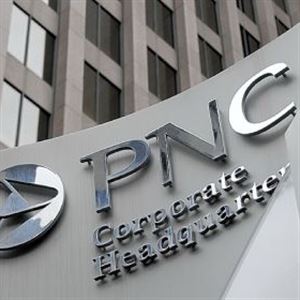Larry Schweiger is president emeritus of PennFuture, past president of the National Wildlife Federation and serves on the board of Climate Reality.
•
The Allegheny County Airport Authority has a $1.1 billion plan to modernize Pittsburgh International Airport, building a new landside terminal and aiming to handle 18 million passengers per year. It also is exploring constructing a natural-gas power plant to generate electricity for the airport and nearby facilities.
A gas-powered airport is incredibly incongruent with the urgent need to end carbon emissions. Expressing it in airport language, the planet will be soon be out of runway needed to avoid a climate catastrophe.
The Pittsburgh International Airport is partnering with Carnegie Mellon University to create the “smartest,” most technologically advanced airport in the world, yet its natural-gas power proposal utterly fails to realistically address its energy needs in the context of a carbon-constrained 21st century. Any investment in a carbon-fueled power plant soon would become a stranded capital asset.
America experienced more than $300 billion in climate-intensified fire and flood damage in 2017 alone. Our politicians at all levels must come to their senses about climate disruption. The need is urgent to cut carbon pollution by at least 7 percent per year to avoid a global temperature increase of 1.5- to 2.0-degrees Celsius that scientists have long warned would be a tipping point, triggering more and more climate damage from fires, droughts, severe storms and sea-level rise.
Meanwhile, solar-powered airports are taking off around the world. India and South Africa are committed to having all of their significant airports solar-powered, as are many European countries. The Cochin International Airport in India, for example, is the first fully solar-powered airport, generating 48,000 to 50,000 kilowatts of power, with surplus energy fed to the grid. The project cost about $9.3 million. Airport officials expect the solar panels to pay for themselves in reduced electricity costs within six years, while avoiding more than 300,000 metric tons of carbon emissions over the next 25 years.
Here in the United States, the international airports serving San Francisco, Denver, Indianapolis, Tucson, Indianapolis, San Diego, Minneapolis-St. Paul and Chattanooga are all going with solar power. The United States has about 500 commercial airports. If a reasonable average of 2 MWp (megawatt peak) of solar power were installed at each of these airports, the gain in capacity would be enough to power 750,000 homes. Most U.S. airports have the unused land and infrastructure needed to stand up solar installations in a relatively short period.
Several years ago, San Francisco installed more than 2,800 solar modules at its airport’s Terminal 3. Along with other efficiencies, it is saving more than $5 million a year in electricity bills.
Denver began installing solar panels in 2008 and now has four arrays covering 56 acres of otherwise unused airport land with an estimated production potential of 16.1 Gigawatt-hours/year — enough to power more than 2,500 Denver-area homes.
In the conservative state of Indiana, Indianapolis International Airport now has the most extensive U.S. airport-based solar farm, producing 20 MWp. Its panels track the sun to optimize output.
Tucson installed a unique “solar amphitheater” that produces 1.25 MWp. It was so successful that it is adding a 2.5-MWp expansion.
Honolulu International and Kahului airports in Hawaii designed 2.5-MWp systems to withstand not only the corrosion caused by a salty, humid climate but also to survive hurricanes.
Despite being much farther north than Pittsburgh, Minneapolis-St. Paul International Airport completed a 3-MWp project on the top of two parking structures in 2015. It also converted more than 7,700 light fixtures to LEDs, and 18 electric-vehicle charging stations were installed.
Chattanooga airport’s 2.1-MWp solar array was completed in 2013 and produces approximately 85 percent of the airport’s energy needs. The airport plans to increase the output to 3 MWp and become energy self-sufficient and carbon neutral.
Tampa International installed a 2-MWp solar canopy on top of a parking garage in 2015. The San Diego airport has 3 MWp currently operational and is establishing a 5.5-MWp solar system.
The point is that we can and should do this in Pittsburgh.
First impressions matter. Our airport is the region’s gateway through which millions of people pass each year. A solar-powered airport would send a powerful message that Pittsburgh truly is a 21st-century city.
The Pittsburgh International Airport area includes thousands of acres of unused land, vast parking lots and rooftops available for solar installations. If Pittsburgh wants to continue to attract 21st-century high-tech companies, we must have a 21st-century solar-powered airport.
First Published: April 20, 2018, 4:00 a.m.
















